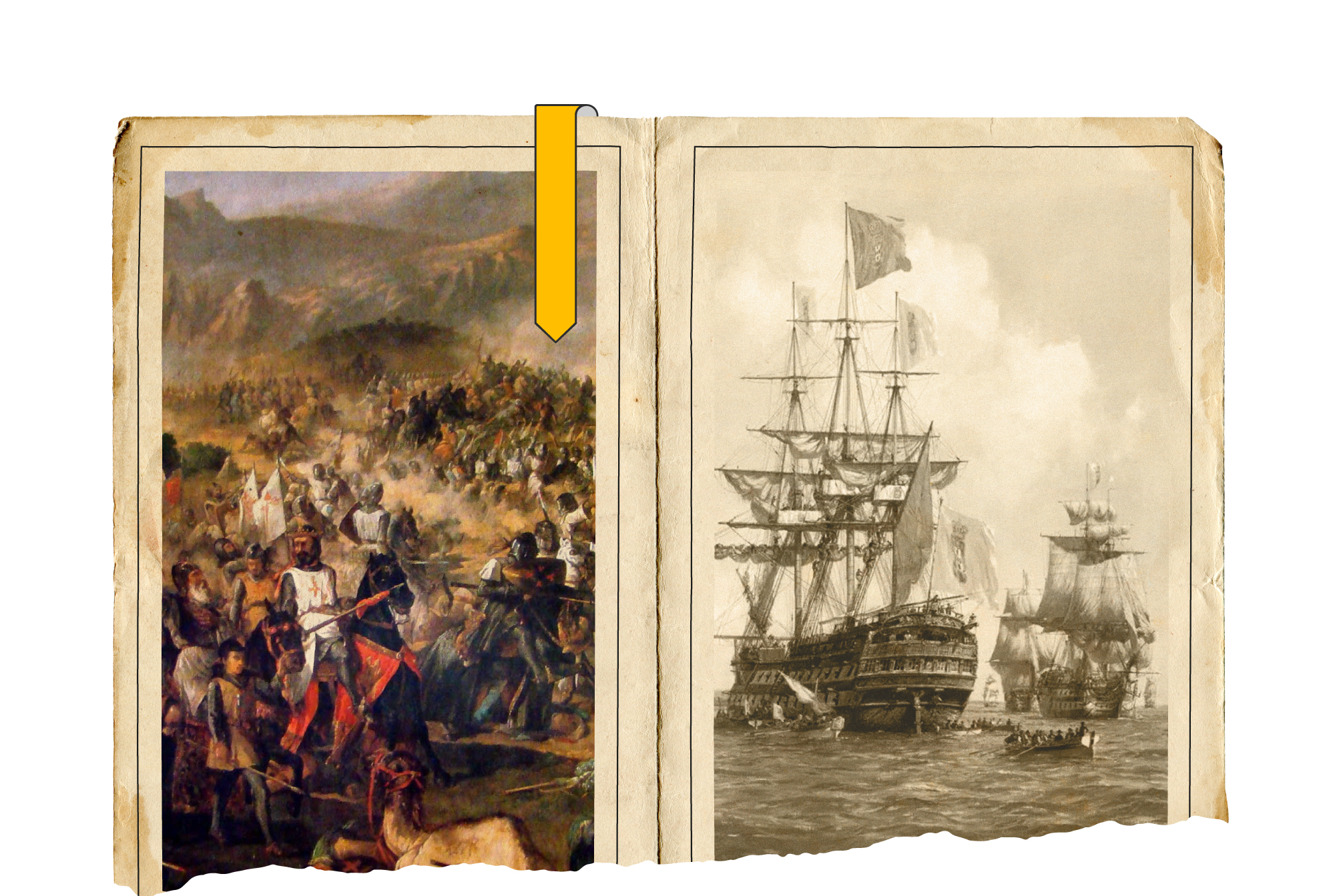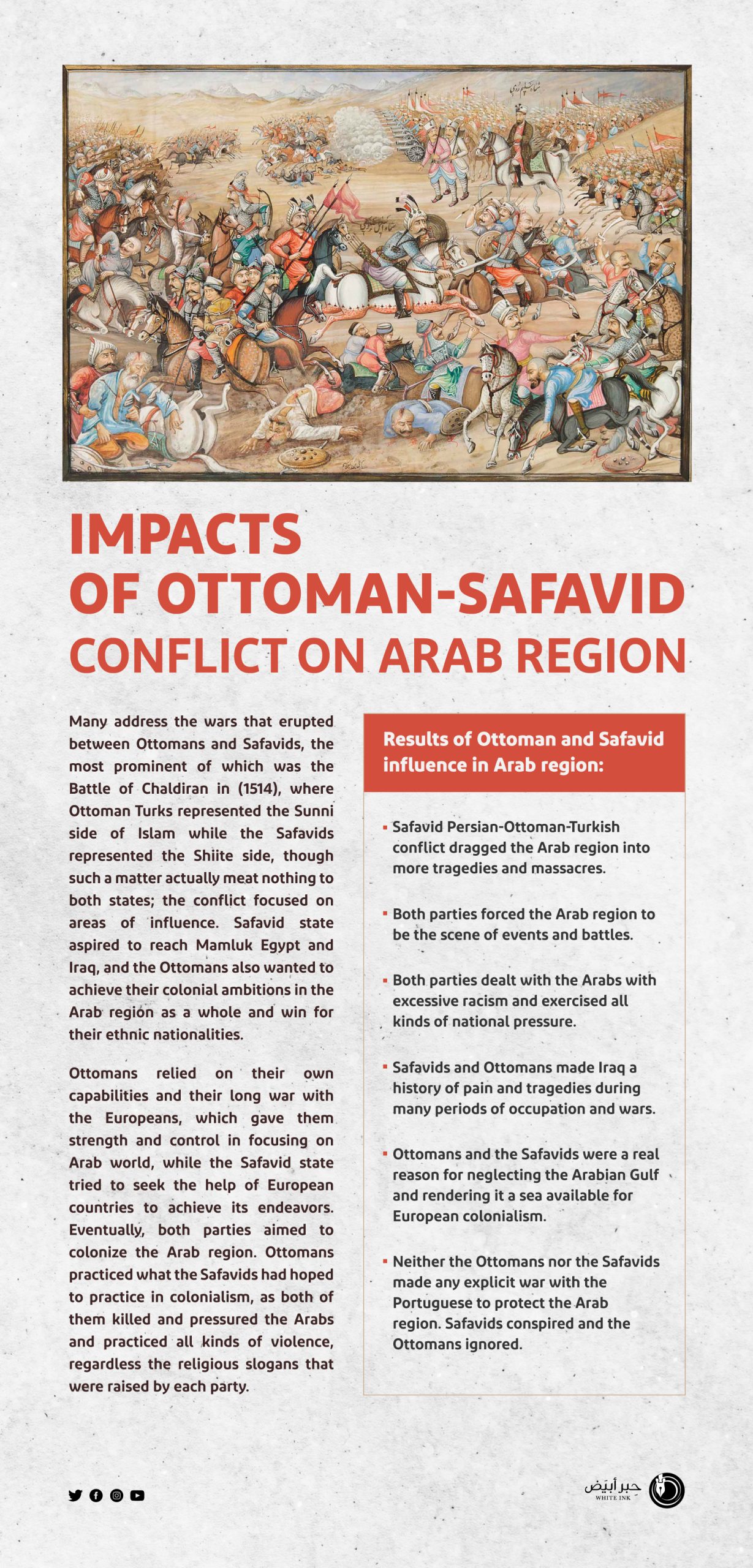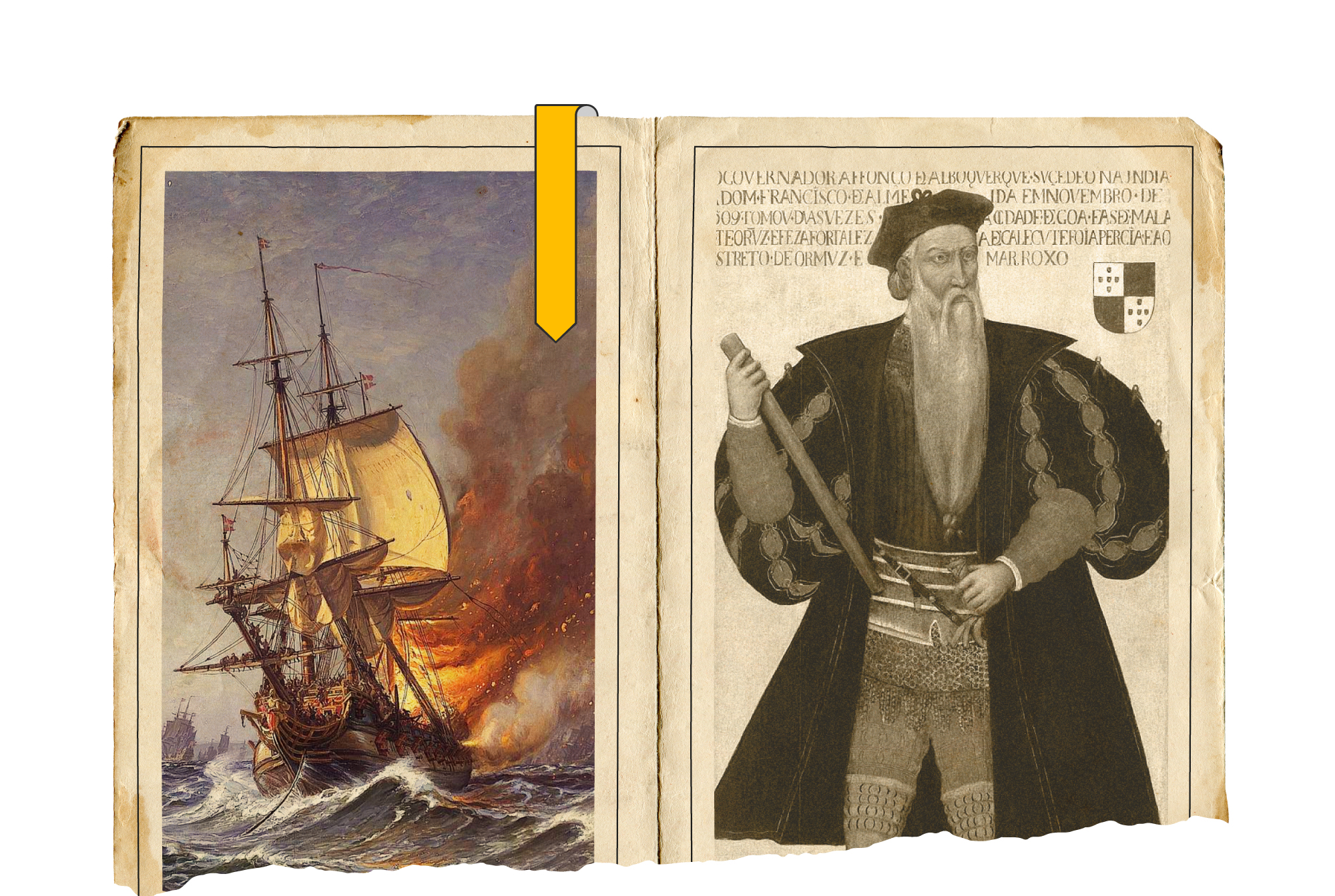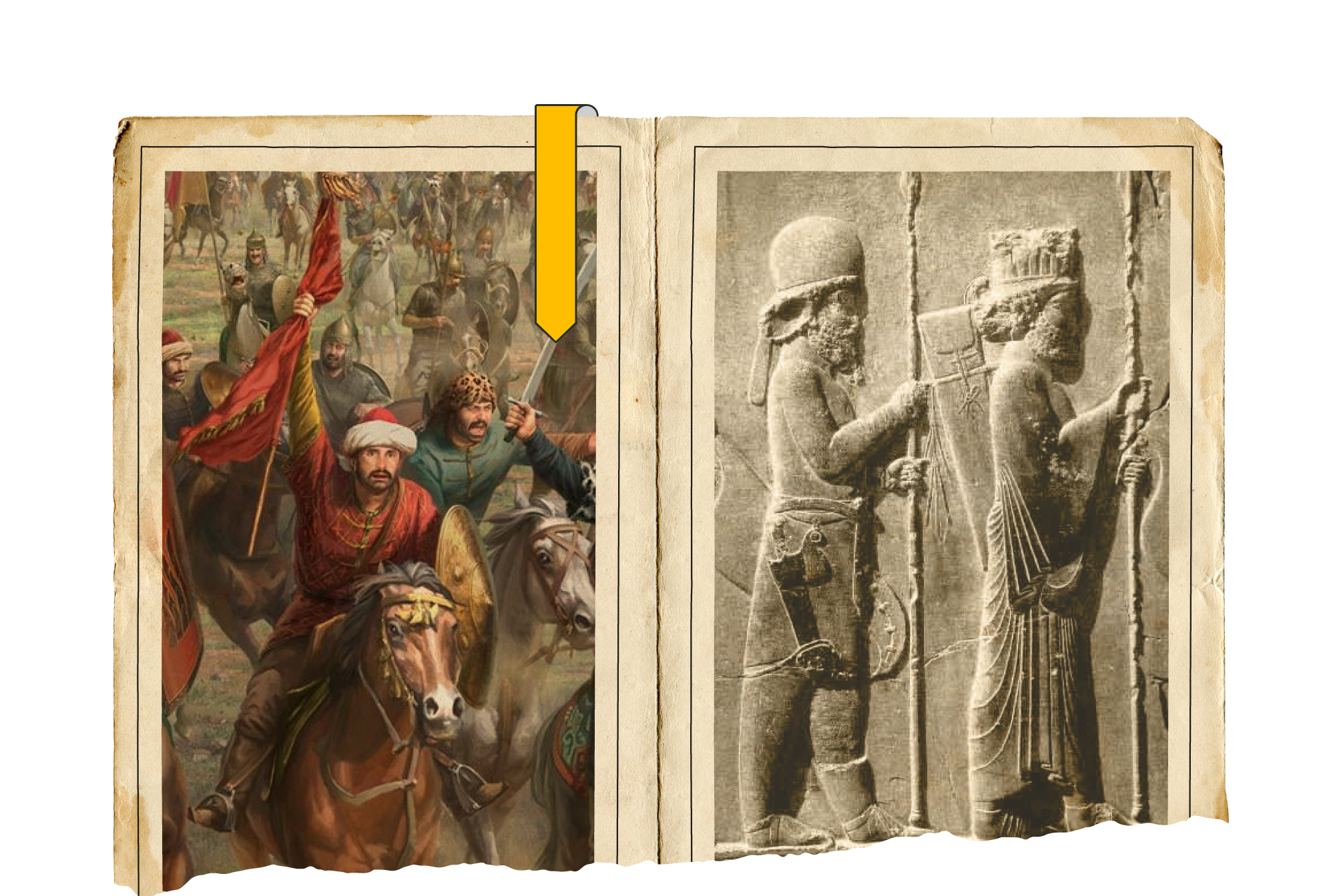
Safavids allied themselves
with all European colonial states in Arab World
Despite the attempts of Shah Ismail, founder of the Safavid state, to give his project a sectarian tint on the Safavid pattern in Iran, his real project is essentially political. We shall not be exaggerating if we say that the Safavid colonial project aimed, right from the outset, to control the eastern wing of the Arab region, especially Iraq and the coasts of Arab Gulf. To confirm that, we have to remember what a Persian politician said about Iraq: “Alas Iraq! That beautiful country fell into the hands of that Iraqi people!! If it was ours, and God will give it to us, it shall then become a paradise”.
It was not surprising that the Safavid colonial tendency converged with the European Crusader colonial ambitions, which became a great danger not only to the Arab region, but also to the entire Islamic world.
First pages of the Safavid colonial alliance begin with European Crusader colonial forces at the hands of Shah Ismail the Safavid, the founder of the state, as well as with Portuguese colonialism. In order to realize how heinousness was that disgraceful alliance and its bad influence on the Arab and Islamic world, we need to remember what Portuguese colonialism did, almost at the same time, in Maghreb region; Portugal was not satisfied with what it and Spain did to the Muslims in Andalusia by ending their rule, conducting inquisition courts and massacres against the remaining Muslims in Andalusia, they started, followed by Spain, attempting to invade the Al-Maghreb Al-Arabi in to control it. The Portuguese campaign was the first and they succeeded in seizing the Moroccan port of Ceuta, overlooking the Mediterranean Sea. Since that time, Ceuta has not returned to the Moroccan homeland as Spain inherited it when the Portuguese crown submitted to Spain.
Persians tried to manipulate colonial powers to achieve their own gains in the Arabian Gulf, but they failed.

Egyptian historian Shawky El-Gamal describes these Portuguese-Spanish campaigns against the Maghreb saying: “These wars were no less ferocious than the wars that took place in the East between the Muslims and the Europeans who came hiding behind the cross of Christ. Thus, we can say that the wave of Crusades that subsided in the East started again in Al-Maghreb Al-Arabi. Any follower would be amazed at the course transfer of those wars from the Levant to Egypt, then to Tunisia, Algeria and Al-Maghreb Al-Aqsa”.
In Arab East, Safavid and Portuguese colonial alliance was held to devour the Arabian Gulf region as the Portuguese turned around Africa to reach and control the Arab and Islamic waters. Shah Ismail Al-Safavi concluded a suspicious deal with the Portuguese that would allow the latter to control the Hormuz Island, which controls the strait, thus controlling the navigation traffic in the Arabian Gulf.
The real goal behind this deal was for Portugal to agree to Iran’s control of areas of the Arabian Peninsula that overlook the Arabian Gulf. However, after their control of Hormuz, the Portuguese refused to allow the Safavids to reach the Arabian Peninsula because Portuguese ambitions were similar to Safavid ambitions. Abdel Aziz Nawwar explains the extent of the bad influence of this Portuguese-Safavid alliance on the history of the Arabian Gulf for several decades, saying: “The result was that this Shah’s policy helped to strengthen Portuguese domination over the Arabian Gulf”.
As for the era of Shah Abbas the Great, it was the peak of the pragmatism of Safavid colonial project in its alliance with European colonial projects. He opened the door for them to control the capabilities of the Arab and Islamic world. This is evident through the missionary exchange between the Safavid court and the rulers of Europe. In fact, Shah Abbas intended to seek the help of their kings. So he opened the door wide to European colonial ambitions in the region. Among the key examples of that sinful alliance in was the delegates and messages exchanged between the Safavid court and the Spanish court, while Spain was working to occupy Tunisia, Algeria and Tripoli in Al-Maghreb Al-Arabi.
When Safavid interests collided with the Portuguese interests in the Arab Gulf region, Shah Abbas the Safavid did not object to the alliance with England to confront the Portuguese influence in the region. British-Safavid alliance succeeded in breaking the Portuguese presence in the region, yet, on the other hand, it opened the door wide for the escalation of British influence in the region for centuries.
Not only was Shah Abbas the Safavi playing with the capabilities of the region with the help of England, but he also continued that pragmatic policy. With the occurrence of internal turmoil and conflicts in England, he resorted to seeking the help of a new ally instead of England, which was somewhat preoccupied with its own affairs. Netherlands was the new ally of the Shah, and their maritime and commercial influence in the Arabian Gulf region and the Arab-Islamic waters in general worsened. However, internal turmoil in England soon subsided and the British influence returned again to the region, to continue until the middle of the twentieth century.
The Safavid pragmatic political project opened the door wide for the European colonial powers to enter the region, as acknowledged by a specialist in Persian studies in the Arab world, Badih Jumaa, saying: “There is no doubt that the interest of European monopolistic companies in the Arabian Gulf region brought many disasters to the region, as Shah Abbas opened the door for them companies therein. Then, after him, there was no political personality in Iran nor in the Arab states bordering the Arabian Gulf that stopped these companies at the limit of commercial dealings, thus their existence turned into European colonialism that dominated most of the states bordering the Gulf on both sides.”
Thus, through the alliances the Safavids concluded with the European colonial countries, these countries found a foothold in the region and Muslim countries were occupied.


- Badih Jumaa, Ahmed Al-Khouli, Safavids History and Civilization, (Cairo: N.P, N.D).
- Shawqi El-Gamal, Great Arab Maghreb from Islamic Conquest to Present Time (Cairo: Anglo-Egyptian Bookshop, 1977).
- Abdel Aziz Nawar, Dawood Pasha, Governor of Baghdad (Cairo: Dar Al-Kitab Al-Arabi, 1968).
- Abdel Aziz Nawar, History of Islamic Peoples in Modern Era (Cairo: Dar Al-Fikr Al-Arabi, 1998).


Portuguese-Safavid Relations
Shared Influence in Arab world and Worked on a Joint War Project
Since the outset of the sixteenth century AD, the political scene in Islamic world began to change rapidly. The emergence of the Safavid state in Iran and its removal of Aq Qwinlu state, its occupation of Baghdad (1508) and its overthrow of the authority of the Arab Mushasha’is in Ahvaz was an indication of that change, in addition to the emergence of the Portuguese in the region as a colonial force fanatical against Muslims. Thus, they became an active and influential force in Indian Ocean.
In a short period of their invasion of the region, the Portuguese were able to reach the wealth of India, relying on the papal decree they were carrying with them, which granted them the east of the ancient world. Their control on the seas was at the expense of the Venetians and the Arabs, so they established commercial centers on the coasts of East Africa and began attacking Arab facilities in the Indian Ocean, using the most brutal methods in dealing therewith, by burning and sinking ships, destroying Islamic cities and centers and expelling merchants therefrom.
The Portuguese continued their invasion until they reached the Arabian Sea, the Sea of Oman and the Arabian Gulf. They spread terror from Aden, passing through Omani ports, such as Ras al-Hadd, Qalhat, Muscat, Sohar, Khorfakkan and Ras al-Khaimah, reaching Arabian Gulf islands, such as Hormuz and Qism to Bahrain.
In the face of these events and developments in the political arena, the Safavids, led by Shah Ismail, were keen to ally with the Portuguese and to build a relationship dominated by courtship and amicability. That cooperation was clearly demonstrated in more than one situation, where the Persian fleet was providing logistical support and cooperation during the attack on Hormuz Island until the completion of its occupation by the Portuguese. He even approved their seizure of the Island in exchange for the Shah’s request for military assistance from the Portuguese against the King of Makran Al Balushi, provided that Gwadar port shall be subject to the Portuguese. The Portuguese also allowed the Persians to open a trading center for them in India, in Goa city, and granted them that Persian goods shall never be confiscated.
Albuquerque’s letter to the Shah indicated the extent of alliance between them when he said to him: “I knew that the Sultan is your enemy and that he is waging war against you. If Your Majesty desires to help us, I will carry out this request for you and subdue your opponent wherever and whenever he is. If you want to attack the Sultan by land, I can help you by sea. Rest assured that it shall be possible to seize Cairo and the whole country with limited efforts. If your Majesty agrees to ally with me and to mobilize your armies and drive them to occupy Cairo, then His Majesty the King of Portugal shall drive all his units and mobilize them to liberate Jerusalem and its neighboring lands. Therefore, I beseech Your Majesty to inform me about the place where you wish the Portuguese fleet to gather to implement the plan.” The Safavid Shah also used the Portuguese to accompany him with a Portuguese naval force in his campaign against Bahrain and Qatif, in addition to pledging to support them.
Portuguese-Safavid alliance project included dividing the Arab East into areas of influence between them, where it was proposed that the Safavids would occupy Egypt and the Portuguese shall have Palestine. That alliance affected the entire Arab region greatly, as the most important sea routes in the Indian Ocean and the Mediterranean Sea were lost, which affected the course of Arab commercial navigation, even terminated them to great extent. This is in addition to lacking the commercial position it was famous for for many centuries ago. Hence, the Portuguese colonizer, supported by the evil alliance of the government of the Safavid state, became the master of the situation, which affected Arab trade in the ports of the Red Sea and the Arabian Gulf, thus weakening the existing governments and kingdoms therein at the time.
They attacked Arab trade, surrounded vital ports and occupied all key



- Jalal Yahya, Modern and Contemporary European History… Europe’s Domination of the World (Alexandria: Modern University Office, 1990).
- Faleh Handal, Arabs and Portugal in History (Abu Dhabi: Publications of the Cultural Foundation, 1997).
- Abdul Latif Al-Humaidan, History of Basra, Al-Hasa and Al-Qatif 1505-1552 (Riyadh: King Abdulaziz House, 2020).

Classical European-Persian Alliance Explains
the Secret of Contemporary Iranian Persistence
Since their dissociation from Islamic faith after the establishment of the Safavid state, Persian kings have insisted on adopting extremism, adapting and directing religious emotions to serve Persians’ ethnic goals. In that Safavid policy there is a clear deception of Muslims, where the saying of US President Abraham Lincoln applies: “You can deceive all people for some time, some people all the time, but you cannot deceive all people all the time”. It strived to deceive people and their religion, in return for strengthening its relationship with Christian states, searching for strong alliances to target the Arab region and avenge the fall of the pagan Sasanian Empire at the hands and swords of Arab Muslims.
Safavid hatred prompted the rulers of Persia to strive to fight the Arab East, which led to the political clash that caused a rift and wound that led to “division and warfare based on the disagreement over the sect. The other, which is not less important, is that fighting weakened both parties and paved the way to western colonization to control many Islamic states, interfering in their affairs and contributing to the creation of many problems, some of which still exist to date, which later became known as the problems of the Middle East”.
Battle of Chaldiran was a decisive turning point in the Persians’ tendency to strengthen their alliance with the Crusader West when they fought with the Ottomans, who had the same goal of striving to control and colonize the Arab world, which ended with the defeat of the Safavids and hastened the destruction of Shah Ismail the Safavid at the age of not more than 38 years. Perhaps that military defeat was behind the Persians’ conviction of the need to seek help from their Christian ally against the enemy; the Ottoman Empire, which the same project shared in terms of influence and control, as well as the eternal enemy represented by Muslim Arabs.
The Safavids were not satisfied with opening the fronts of military confrontation only, but rather they strived to adapt the religious text to strike at the symbols of the Islamic nation and their pillars, in parallel with polishing Christianity and presenting it as a peaceful and appeasement religion. This was in military preparation for prospective military alliances against the Arab world. Examination of the key publications on Safavid religious, which deviated from the purity of the faith and tended towards sanctifying the political-ethnic orientation of the Persians, confirms that the “demonization” of the symbols of Islam has turned into a religious belief that everyone who fell victim to the Safavid “propaganda” worships. Perhaps a mere look at what Al-Kulayni wrote in Al-Kafi, Al-Tusi in Alestebsar and Ibn Babioh al-Qummi in Man La Yahdaruhu al-Faqih, confirms that these intellectual toxins and terrorist remnants are nothing but a discharge of the doctrine of hatred against Muslim Arabs. This is because striking belief stems from targeting men who carried the trust of conveying the message of the Holy Prophet, and to whom Allah Almighty describes as loyal, honest and upright; those who were among the persons who faithfully pledged allegiance to Allah, fulfilled the trust and were promised Paradise.
The Safavids were the first to change the direction of the Islamic process and were the first race to claim affiliation with Islam. Meanwhile, they strived to strike it with malicious heresies that no one in the worlds preceded them to. Thus, Safavid state walked proceeded in “its directions, opposite to the course of the nation’s history, only because it was founded on deviant foundations. In addition, most of its military efforts and political relations are directed to strike the nation from within”.
Despite the political piety practiced by the Persians during their periods of weakness, and the “Shah Abbas’s abandonment of his extremist Alawism in his letters to the Ottomans”, which he “started by greeting the four rightly guided caliphs”, yet the truth of the corrupt belief indicates that the Safavids were striving to pit public opinion against Muslim symbols in order to legitimize their hostility to the Ottomans first, and then prepared to pounce on the center of the Islamic nation, represented in the Two Holy Mosques.
Safavids led a political, intellectual and religious war against Arab Muslims.

The reality of international relations today confirms that Safavid Iran indicated great flexibility in linking classic alliances with the West, despite its claim of hostility to America and raising slogans of doom and death to Israel. Perhaps what is happening in the Arab region of empowering Iran in Syria, Iraq, Yemen and Lebanon, with Western blessing, indicates that the mullahs have always been at the heart of the Western project in the region.
It can be said, in general, that despite the current Arab caution regarding the Iranian threat, yet those who move the threads of the game in dark rooms and behind walls are forces that do not differ in their hostility and plot to the Arab and Islamic nation from Iran, no matter how much it tries to embellish its malicious goals with the powders of freedom, democracy and human rights. Therefore, the opponent of the Arabs and Muslims is not, and never was, Iran alone.


- Basem Hamza, Iran’s Military, Doctrinal, and Domestic Policy and Its Impact on Foreign Policy during the Reign of Shah Ismail Al-Safavid 1501-1524, Journal of Iranian Studies, University of Basra, pp. 10-11 (2009).
- Fahmy Huwaidi, History and Religion in the Relationship between Arabs and Iran, a study published on the website of the Arab Center for Research and Policy Studies (2011).
- Muhammad Suhail Taqosh, History of the Safavid State in Iran (Beirut: Dar Al-Nafais, 2009).
- Haitham Al-Kiswani, Safavid State and its Impact on Islamic World, 2nd Edition (Manarat Book Series, 2008).





